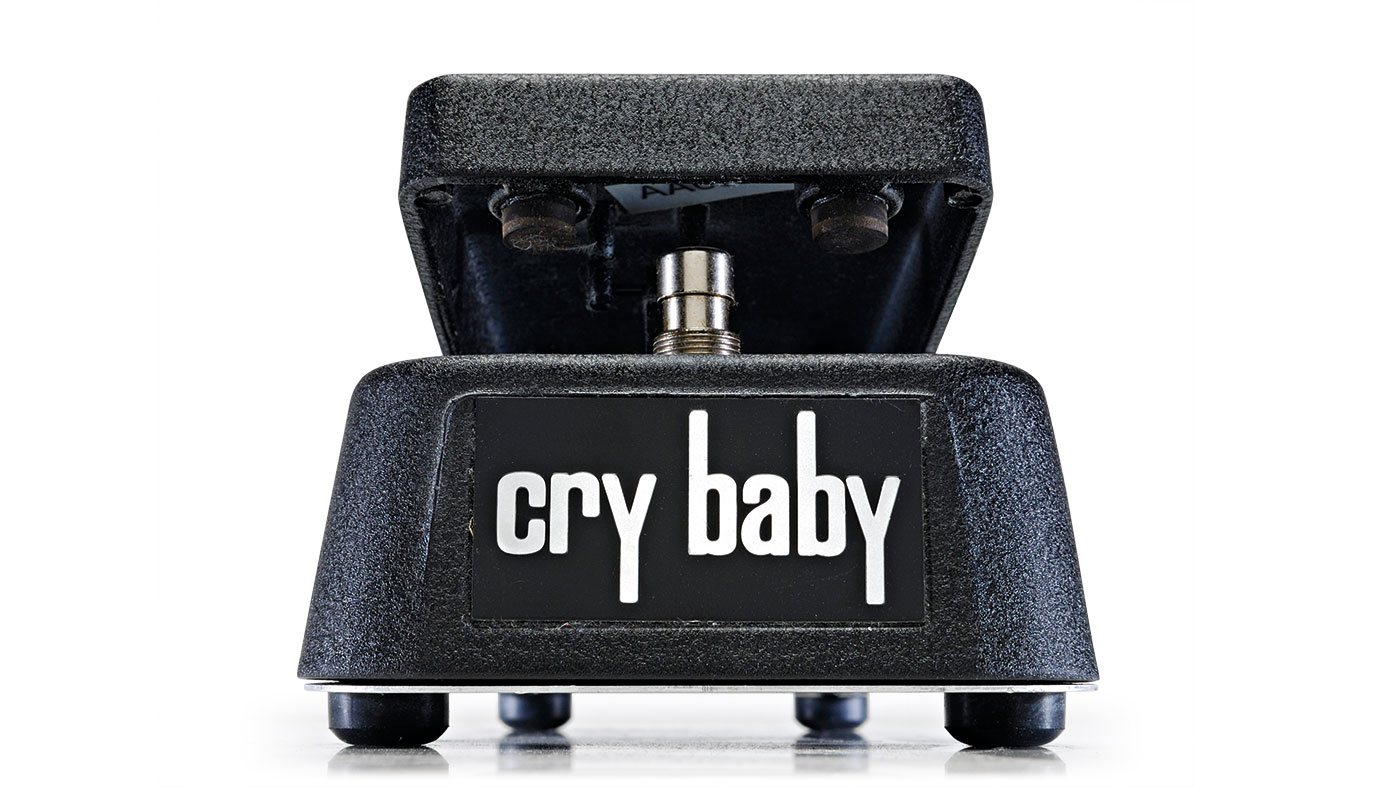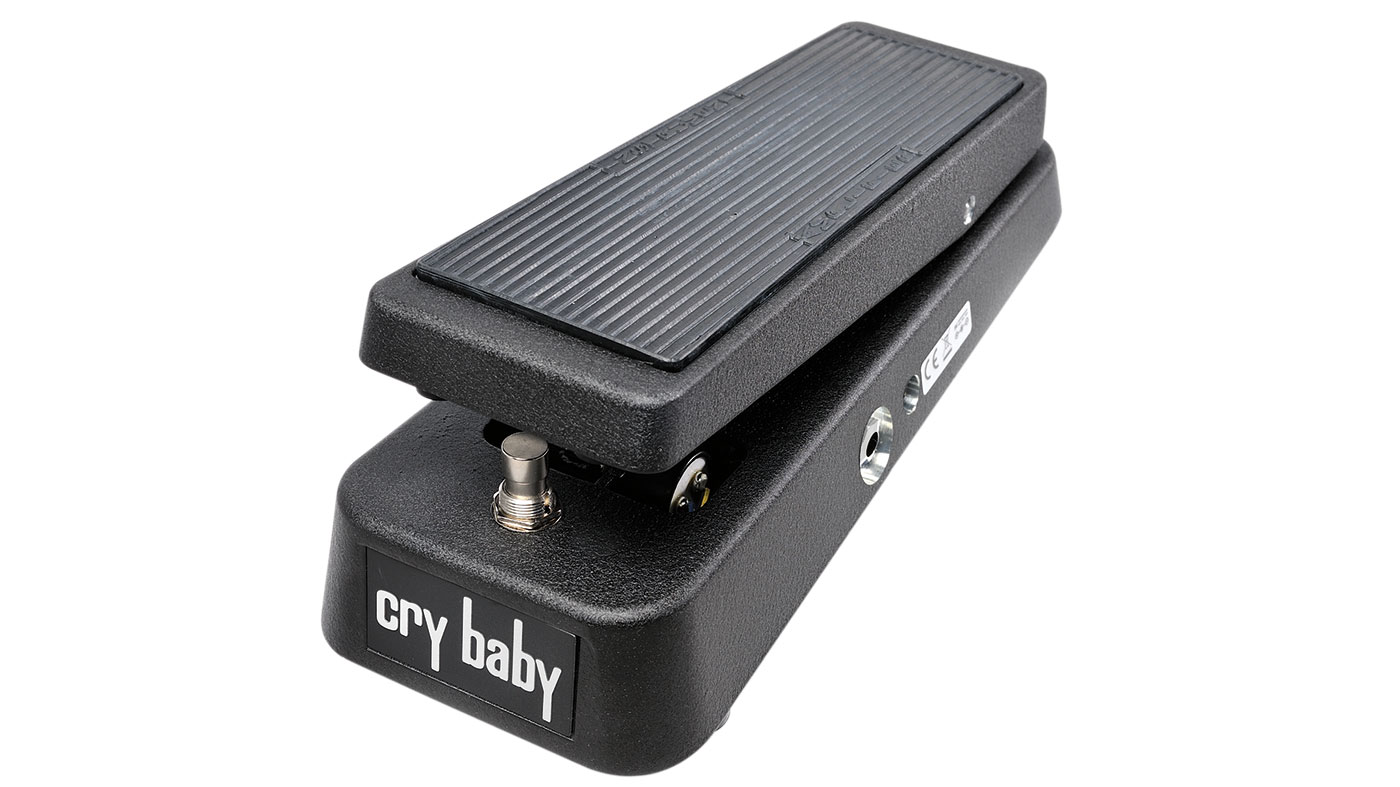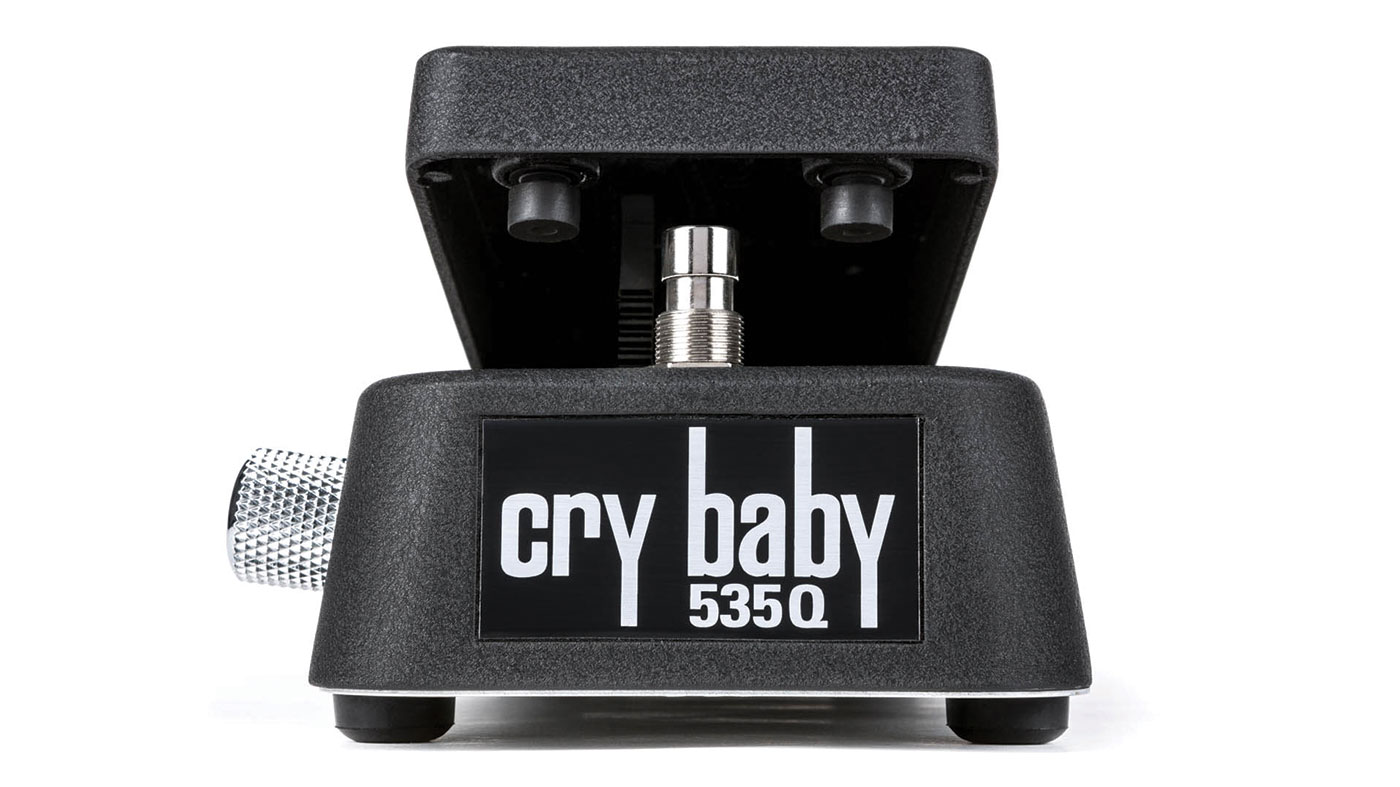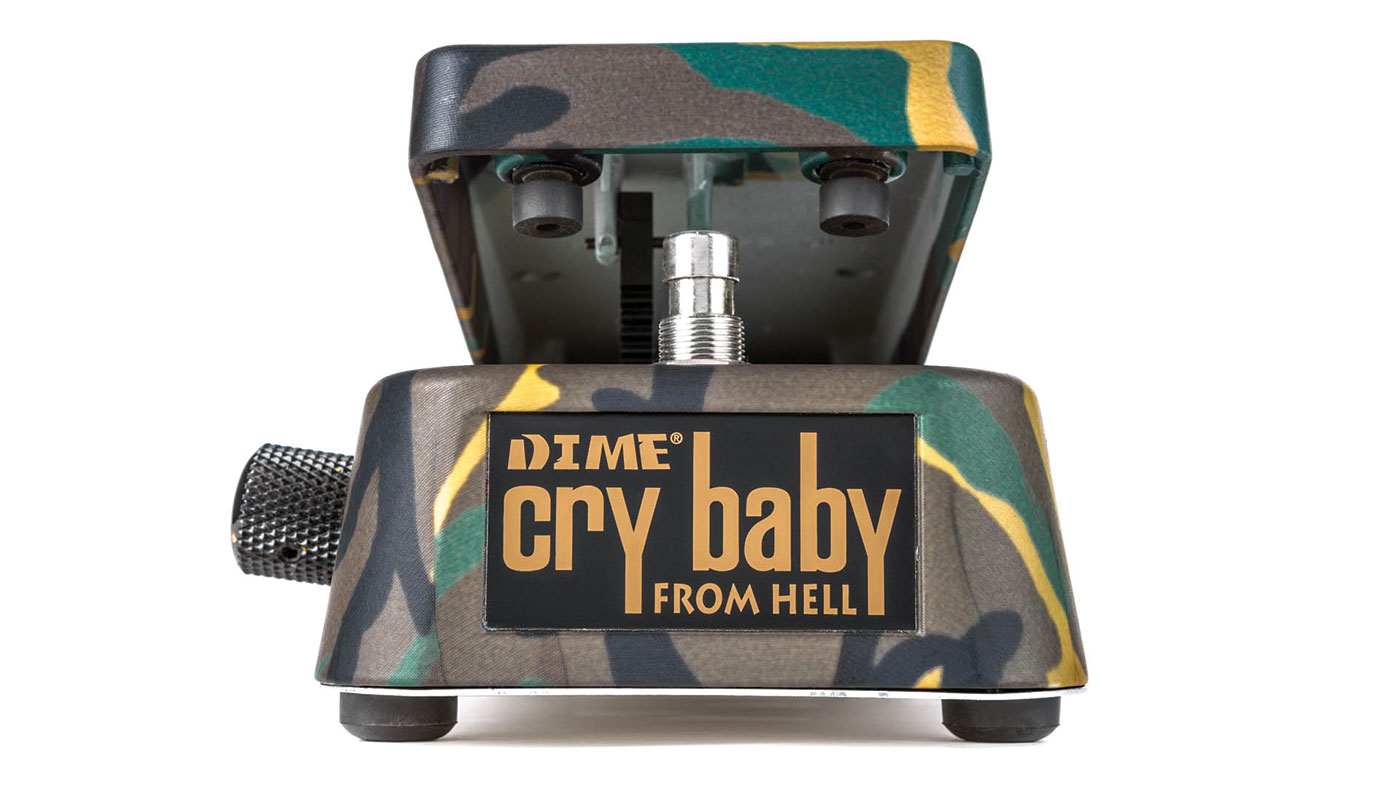The FX files: Dunlop Cry Baby
The history of the world-famous wah pedal

The most famous wah pedal in the world, the Cry Baby has been used by every guitarist from Hendrix to Hammett.
Named after the Vox Cry Baby pedal it imitated, the Dunlop Cry Baby became synonymous with ‘wah pedal’. Although there have been many versions and countless classic tones created with it, the core circuit has remained largely stable since the 60s.
The wah was originally developed to emulate the sound of a muted trumpet
The wah was originally developed to emulate the sound of a muted trumpet, and when combined with a rocking treadle, allowed for a hugely expressive range of filter sounds to be created.
An early and progressive adopter was a young guitar virtuoso named Jimi Hendrix, who had already seen the brass parallels with the electric guitar when he dubbed it the “public saxophone”. Whether filtering feedback and sustained notes through a wall of sound or adding percussive clicks to the opening of Voodoo Child, Hendrix remains the wah master.
At the core of the circuit is an active bandpass filter, created using an inductor. The filter is centred at around 750Hz, where it delivers 18dB of boost, and attenuates out-of-band frequencies. On the original GCB-95 model, the sweep available from the treadle was from about 450Hz to 1600Hz. Later developments, such as the bass version, change the frequency range - although it’s also relatively simple to add additional boost or alter the Q - that is, the severity of the curve - of the filter.
Used as a variable filter, rather than as a tool to accent individual notes, the Dunlop Cry Baby has a distinctly different character. By rapidly sweeping the treadle, a ‘waka’ sound can be generated as the filter brings out treble in the guitar, particularly if the guitarist is using pick scratches. This classic sound is pervasive across the funk genre, and it also features in a number of iconic police show soundtracks too.
Dry your eyes

The true beauty of the Cry Baby is that it has only one real control - the potentiometer that is varied by your foot moving the treadle. Putting your toe down or up sweeps the centre frequency of the filter band.
Get the MusicRadar Newsletter
Want all the hottest music and gear news, reviews, deals, features and more, direct to your inbox? Sign up here.
Frequencies outside of this band are attenuated, and frequencies within it are not only retained, but actively boosted. It’s this selective boosting or rejection of frequencies, combined with the dynamic ability to rapidly change them, that gives this famous wah pedal its instantly recognisable sound.
Under the influence

Jim Dunlop Cry Baby 535Q Multi Wah
The 535Q Multi Wah is the first major evolution of the Cry Baby circuit and it adds in controls on the outside of the chassis for controlling the boost level, up to the maximum of 18dB, as well as a rotary selector for the filter range. What is important to note here is that with hardwire bypass it also attempts to solve the Achilles heel of the original: its somewhat tone-sucking bypassed state.

Jim Dunlop Dimebag Darrell Cry Baby
The Dimebag signature takes the most obvious mods that can be done to the original circuit and packs them in. Extended filter sweep? Check. Six-way frequency selector for the filter? Check. Boost option? Check. LED indicators for both? Check. Camouflage paint job? Naturally. The result is an incredibly flexible take on the original that can deliver more dramatic and aggressive tones.

Jim Dunlop JD-DCR-2SRUK
For those moments when you absolutely, positively need to melt every face in the room, we suggest you go for the rack version. With all the boost and frequency options you’d expect, as well as the ability to hook up six remote foot pedals, the rack unit has dedicated controls for filter points and a variable Q, allowing you to change the shape of the filter from tight to broad.
Classic tones
This isn’t a signature sound for Matt Bellamy, but it crops up fairly often in breakdowns and drops. Here, the pedal is on, and completely toe-down for a radical filter effect in the intro - to up the ante, there’s a fuzz in front. Just before the band kicks in, turn the pedal off and let your fuzz come through unfiltered.
Dire Straits - Money For Nothing
Although the original pedal used on this track was reportedly a Morley, the parked, partly-open wah sound in the intro of this song is probably the most iconic non-standard use of a wah pedal in rock music, and instantly recognisable. Turn the pedal on and pull it back until you hear that sign.
Joe Satriani - Surfing With The Alien
Before his Vox signature, Joe used a number of Cry Baby pedals over the years to get his signature expressive lead tone. By using the wah, he could drag vowel-like sounds out of his instrument while slower sweeps paired with fast tapping deliver a filter or phase-shifter like sound. These techniques are all over this track.
Total Guitar is Europe's best-selling guitar magazine.
Every month we feature interviews with the biggest names and hottest new acts in guitar land, plus Guest Lessons from the stars.
Finally, our Rocked & Rated section is the place to go for reviews, round-ups and help setting up your guitars and gear.
Subscribe: http://bit.ly/totalguitar
“A fully playable electro-mechanical synth voice that tracks the pitch of your playing in real time”: Gamechanger Audio unveils the Motor Pedal – a real synth pedal with a “multi-modal gas pedal”
“Instead of labouring over a perfect recreation, we decided to make an expanded counterpart”: Chase Bliss teams up with Mike Piera for Analog Man collab based on the legendary King Of Tone












